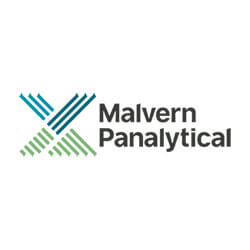Introduction
Introduction
The ability to detect nanoparticle fluorescence is important when attempting to distinguish a particular subset of particles from within a complex background. Particles which are fluorescent can be measured in terms of particle size and concentration to understand the nature of those particles. A typical application for this is in understanding the fate of drug delivery vectors as well as understanding the toxicology of nanoparticles in biological environments. Alternatively, fluorescently labeled antibodies may be used to bind specifically to target particles within a sample, thus providing a mechanism to identify specific particle populations within an unknown sample. This has implications in diagnostic applications such as research into exosomes and microvesicles, where specific markers can be identified and monitored in the detection of disease. Nanoparticle Tracking Analysis (NTA), available on the NanoSight range of instruments, can operate in light scatter mode where all particles within a sample are visualized and measured (and thus does not require the sample to be fluorescently labeled to take a measurement). Alternatively, the instruments can also operate in fluorescence mode where only fluorescently labeled particles are detected and measured.The NanoSight system uses either a 405 nm (violet), 488 nm (blue) or 532 nm (green) laser source to excite particles labelled with appropriate fluorophores, whose fluorescence can then be determined using suitably matched long or short-pass filters. This application note works through an experiment to approximately establish a baseline in terms of the fluorescence limit of detection for a given fluorophore. The biotin-streptavidin interaction is known to be a very strong non-covalent binding interaction, Kd ~10-14 mol/L. Each streptavidin molecule has 4 available sites for biotin binding, one for each of the monomer units that comprise the quaternary structure. This ratio was used to calculate a maximum possible number of fluorescent streptavidin molecules that each gold nanoparticle could have bound to the surface. >> Download the full Application Note as PDF
Malvern Instruments provides the materials and biophysical characterization technology and expertise that enable scientists and engineers to understand and control the properties of dispersed systems. These systems range from proteins and polymers in solution, particle and nanoparticle suspensions and emulsions, through to sprays and aerosols, industrial bulk powders and high concentration slurries. Used at all stages of research, development and manufacturing, Malvern’s materials characterization instruments provide critical information that helps accelerate research and product development, enhance and maintain product quality and optimize process efficiency. Our products reflect Malvern’s drive to exploit the latest technological innovations and our commitment to maximizing the potential of established techniques. They are used by both industry and academia, in sectors ranging from pharmaceuticals and biopharmaceuticals to bulk chemicals, cement, plastics and polymers, energy and the environment. Malvern systems are used to measure particle size, particle shape, zeta potential, protein charge, molecular weight, mass, size and conformation, rheological properties and for chemical identification, advancing the understanding of dispersed systems across many different industries and applications. Headquartered in Malvern, UK, Malvern Instruments has subsidiary organizations in all major European markets, North America, Mexico, China, Japan and Korea, a joint venture in India, a global distributor network and applications laboratories around the world. www.malvern.com severine.michel@malvern.com





